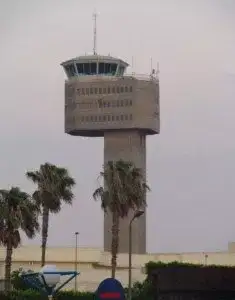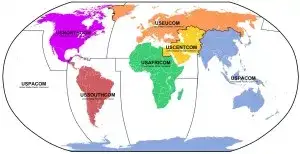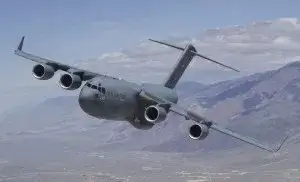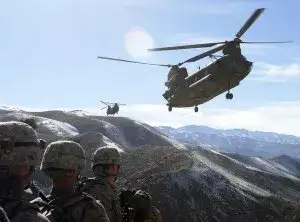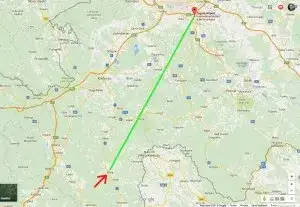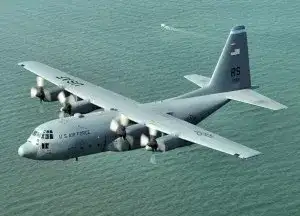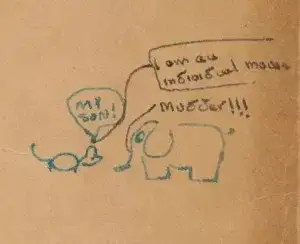The real secret of Benghazi
October 22, 2023 by Thomas Wictor
One of the reasons I’m apolitical is that loyalty to groups can make people extremely immoral. They allow themselves to become corrupted in defense of the indefensible. Protecting a member or the leader of a group takes precedence over everything, even human life. I’ve figured out the real secret of what happened in Benghazi on September 11, 2012. It’s pretty horrifying.
Clearly the White House, the State Department, and the Pentagon are lying about the two attacks that killed U.S. Ambassador J. Christopher Stevens, U.S. Foreign Service Information Management Officer Sean Smith, and CIA contractors Tyrone S. Woods and Glen Doherty. Using open sources, I proved that our government knew from the beginning that this was a massive al-Qaeda operation. In Benghazi over 150 terrorists armed with gun trucks, mortars, rocket-propelled grenades, and heavy machine guns carried out an assault that they’d planned for weeks.
The same number of Islamic State terrorists took the entire Iraqi city of Ramadi, May 14 to May 17, 2015. What happened in Benghazi was the equivalent of a motorized infantry company launching a combined-arms assault. Since the US had two surveillance unmanned aerial vehicles (UAVs) overhead, our leaders saw exactly what was going on. They just didn’t care.
But that isn’t the real secret of Benghazi. Nobody can be surprised that politicians are indifferent to the fate of their constituents. To illustrate what I’ve realized, here’s a story from my senior-class biology teacher.
He worked in Egypt for years, back in the early to mid 1970s. Since he was a pilot, he managed to wrangle his way into the control tower at Cairo International Airport.
Air traffic controllers have one of the most stressful jobs in the world. My teacher told me that when things got too busy, the Egyptian air traffic controllers would shut off their monitors, say, “Inshallah,” and go off for a smoke and cup of coffee. The hundreds of incoming airliners, cargo transports, and private aircraft would then have to contact each other by radio and work out who got to land when. Disaster was averted by inches daily.
Well, this is exactly what’s happened in the US. Our president spent the first year of his first term bitching about how hard the job was, and then he said, “Inshallah” and walked away. Everybody’s been covering up for him since 2010.
There are precedents for this. Dwight D. Eisenhower had a massive heart attack on September 24, 1955. He was incapacitated for weeks, leaving the country in the hands of Vice President Richard Nixon. The true extent of Eisenhower’s illness was concealed from the public. He should’ve resigned.
John F. Kennedy suffered from colitis, prostatitis, Addison’s disease, and osteoporosis of the lower back. He took twelve pain medications, including codeine, Demerol, and methadone. To fight the grogginess of the pain medication, he took the stimulant Ritalin. For anxiety he was prescribed meprobamate and librium, for insomnia he was given barbiturates, for Addison’s disease he took steroids, for colitis he took anti-spasmodics, for his allergies he took antihistamines, and at least once he was given an anti-psychotic drug for severe depression.
Like Eisenhower, he should’ve resigned.
President Obama should’ve resigned in late 2009. Instead, he emulated his predecessors and insisted on staying while avoiding his responsibilities. I’ll show you how.
The US military is divided into six regional unified combatant commands (UCCs) and three functional UCCs.
Each UCC is led by a Combatant Commander. By May of 2010, President Obama had backed out of the decision-making process as Commander-in-Chief.
Obama Gives Commanders Wide Berth for Secret Warfare
Last summer, the White House authorized a massive expansion of clandestine military and intelligence operations worldwide, sanctioning activities in more than a dozen countries and giving the military’s combatant commanders significant new authority to conduct unconventional warfare…
The authorization to write the orders allow combatant commanders to put together task forces for almost any purpose, and draw from almost any existing military unit. JUWTFs [Joint Unconventional Warfare Task Forces] are not classified and are in regular use. But until last summer, they tended to be formed for temporary and limited purposes. Even during the Bush administration, the military did not insert American personnel into Iran, which is what the [code-named] Avocado execute order now permits.
Not surprisingly, the larger counter-terrorism task forces tend to be full of operators from the clandestine Joint Special Operations Command (JSOC), as well as contractors from companies like L3. But JSOC is not the executive authority for these missions, as one might suspect. Rather, the commanders, like CENTCOM’s Petraeus, have direct authority.
President Obama delegated responsibility for Operation Inherent Resolve in Iraq and Syria to the commander of Central Command (CENTCOM).
Army Gen. Lloyd Austin III, the commander of U.S. Central Command, made the call Monday morning to order airstrikes against jihadi targets in Syria and has the authority to order more, according to the Pentagon.
Austin, whose office is located on the top floor of the four-story Centcom headquarters at MacDill Air Force Base in Tampa, is in charge of U.S. military operations in Syria, Iraq and 18 other nations in the Middle East and Southwest Asia.
Though it was President Barack Obama’s ultimate decision to call for the airstrikes in Syria, which he authorized the day after visiting Centcom last Wednesday, Austin ordered the strikes that hit 14 Islamic State targets and eight Khorasan Group targets in Syria, the Pentagon said.
Combatant commanders are supposed to receive their orders from the Secretary of Defense, who gets them from the Commander-in-Chief. President Obama is busy drinking, complaining, and golfing, and the combatant commanders are—like airliners without air-traffic controllers—trying to land themselves without crashing. As a result, our wars are confused messes.
And in Benghazi on September 11, 2012, four Americans were killed due to the president’s weakness.
Each unified combatant command is assigned a Combatant Commanders In-extremis Force (CIF) Company from one of the seven US Army Special Forces Groups. The 10th Special Forces Group has European Command (EUCOM) as its area of responsibility (AOR). Its CIF is named “C1/10.” A CIF is comprised of a varying number of 12-man Operational Detachment Alphas (ODAs) and one 12-man Operational Detachment Bravo (ODB) for support and command and control. The largest CIF is likely six ODAs (72 men) and one ODB (12 men), for a total of 84.
The CIFs are on call 24 hours a day. Their weapons and equipment are packed into a C-17 Globemaster, ready to go.
These are military first responders. When they get the call, they run to the C-17 and leave the ground immediately. On board, they gear up and learn whatever information is available. The term “in extremis” means “at the point of death.” A CIF is only used in dire emergencies, when nobody knows what the hell is going on.
Libya is in UCC AFRICOM, which on September 11, 2012, had no CIF. Therefore the CIF of EUCOM—C1/10—was alerted. At the time, C1/10 was at Slunj Training Range in Croatia. When they were called, the CIF would have boarded two Chinook CH47 helicopters.
The Chinook has a top speed of 196 mph (315 km/h). Slunj is about 47 miles (76 kilometers) from Zagreb International Airport and Air Force Base, where the CIF Globemaster would have been waiting.
It would’ve taken C1/10 about fifteen minutes to fly to Zagreb Air Force Base. The distance from Zagreb to Benghazi is 957 miles (1540 kilometers). Since the cruising speed of the C-17 Globemaster is 518 mph (834 km/h), CIF C1/10 could’ve been in Benghazi in one hour and fifty minutes. The attacks went on for almost eight hours.
However.
What actually happened was that at Zagreb Air Force Base, CIF C1/10 boarded a C-130 turboprop transport.
Instead of heading to Benghazi, the C-130 flew to Sigonella air base in Italy, which was serving as a “staging area.”
Former Secretary of Defense Leon Panetta said that he authorized CIF C1/10 to deploy. In reality, the Secretary of Defense doesn’t order the CIFs into action. The president and Secretary of Defense form the National Command Authority. This is the Chain of command for the CIFs:
a. National Command Authority
b. Geographical Combatant Commander
c. Theater Commander
d. Theater Special Operations Commander (SOC)
e. Forward Deployed Special Operations Forces (including CIFs)
When a time-sensitive crisis develops, the SOC will order the forward-deployed special operations forces (SOF) to execute tactical missions. Rescuing the Americans in Benghazi was a tactical mision, not a strategic one. So why didn’t C1/10 go to Benghazi?
I’ll tell you in a moment. But first this.
Asked why the U.S. military did not do more, Defense Secretary Leon Panetta said Thursday the first rule in such a situation is not to deploy troops into harm’s way unless there is a clear picture of what is happening.
“And as result of not having that kind of information, the commander who is on the ground … felt very strongly that we could not put forces at risk in that situation,” Panetta said.
No. CIFs are used precisely in these circumstances. An embassy is under attack, and an ambassador is missing. Things happen automatically. They don’t have to be authorized. Also, Panetta first said that he ordered the CIF to deploy, and then he said that the policy is to not deploy troops unless you have a clear picture of what’s happening. He completely contradicted himself.
From their alert, it took CIF C1/10 almost 22 hours to arrive at Sigonella, described as a staging area. Well, CIFs don’t need staging areas. Their staging area is their transport aircraft. By the time C1/10 landed in Italy, it was far too late for those in Benghazi.
The president has forced the Combatant Commanders to make the decisions that he prefers to avoid, but there’s one duty that he can’t shirk: Only the president can give cross-border authority (CBA). No American military unit will enter another nation on a combat mission without that country’s permission unless the president gives a verbal and written CBA.
President Obama never issued a CBA allowing a rescue mission for the Americans in Benghazi. We have the worst of all possible worlds: The Commander-in-Chief avoids as much responsibility as he can, but he won’t allow others to completely take over. When he and he alone has to make the decision, he can’t, yet he still tightly grips the final reins of power. Thus our foreign policy is incoherent, and our Secretaries of State and Defense lie right to our faces in order to protect one man from his own failings. He belongs to the group; his welfare is all that matters.
Yesterday a brilliant woman interpreted a cartoon that my mother left behind. Mom wanted to be a Disney animator, but her parents disapproved. This is from 1944, when Mom was sixteen.
“I am an individual mouse,” says the little critter to the elephant.
“Mudder!”
“My son!”
This stumped me, but as my friend explained, it’s a mouse adopting an elephant who refuses to join the herd.
Mom was an individual mouse, and so am I.
This article viewed 3179 times.


